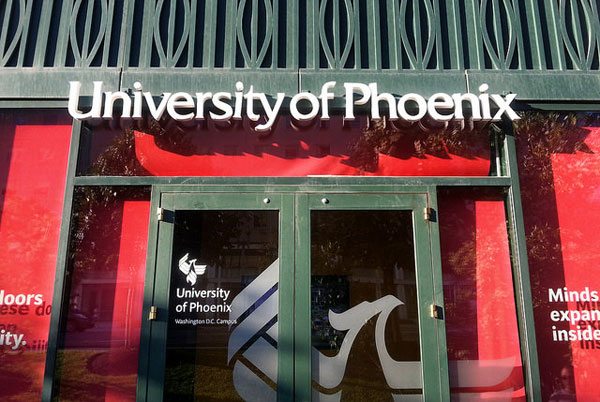
September 11, 2017; MarketWatch
The commercials are inspiring: a single mom putting her children to bed only to hit the books in a late-night study session, or symbolically walking over a bridge while describing educational programs tailored to the needs of working moms. “She could do it, and so can you.”
The commercials are indeed emotionally effective, but the schools they recruit for are much less so, often creating debt while not graduating the aspiring students targeted by such ads. As we mentioned in another of today’s newswires, there are fields in which nonprofits produce far better outcomes than for-profits, and higher education is one of them.
In 1982, for the first time, more U.S. women graduated with bachelor’s degrees than men, and those numbers continue to rise. However, one group of women still faces major obstacles to degree attainment: single mothers, and especially single mothers with lower incomes. It’s not that this group has stopped pursuing higher education; in fact, more and more continue to do so. Unfortunately, single women have also been targeted by for-profit, often less than scrupulous, colleges. For example, a recent report penned by the Institute for Women’s Policy Research found that “About 30 percent of single mothers in college attend for-profit schools, according to an analysis of government data from the 2011–2012 academic year.” By comparison, fewer than one in ten singles without dependents did so.
As has been well covered by NPQ, for-profit colleges have been beset by multiple problems and scandals: they have created bogus veterans’ chapters to boost enrollment, placed profit over educational attainment, failed to graduate students, and, in a final act of desperation, started converting from for-profit status to nonprofit.
Fortunately for potential students, if not so great for the culprit institutions, this began to change in 2016, as the U.S. Department of Education, in the last year of the Obama administration, began to crack down on the worst offenders, instituting “policies that safeguard students’ federal financial aid and in the process put the two largest national networks of for-profit education institutions out of business.”
But like a phoenix rising from its ashes, for-profit educational institutions appear to be enjoying a rebirth courtesy of the Trump administration’s Education Secretary, Betsy DeVos. Secretary DeVos, like many of her cabinet counterparts, has painstakingly dismantled many Obama-era policies, regardless of their proven effectiveness. DeVos’s rationale was that the regulations were “a muddled process that’s unfair to students and schools.”
Sign up for our free newsletters
Subscribe to NPQ's newsletters to have our top stories delivered directly to your inbox.
By signing up, you agree to our privacy policy and terms of use, and to receive messages from NPQ and our partners.
The regulation DeVos deemed “muddled” addresses “gainful employment.” The gainful employment regulation aims to protect students borrowing money from paying for education in a specific program that does not result in gainful employment in that field over a reasonable amount of time, resulting in an inability to repay the loan. Multiple years of this renders the institution ineligible to receive federal financial aid funds.
Another of the Obama regulations, not yet slated for reversal but a potential next target, is the 90/10 regulation, which addresses an institution’s total revenue vs. the institution’s revenue derived from federal student financial aid. In the most recent filing, only 17 institutions of 1898 submitted did not meet the criteria of falling within the dreaded and illegal 90th percentile. Fifteen of those did not meet the same criteria but had the previous year, making them still eligible for federal student financial aid.
Regulations require non-compliance for three consecutive years; consequently, only two institutions became ineligible. However, typical of the proven skullduggery employed by these institutions, the same data indicate that although the remaining institutions were in compliance, 649 institutions hovered at the 79th percentile and above. The number of institutions at the 90th percentile would skyrocket if the benefits of veterans—who, like single moms, are one of these institutions’ targeted populations—were included in the 90/10 calculations.
How is this all playing out for single student moms? In the case of Sarah Dieffenbacher, who has filed suit, she is requesting speedy determination of the validity of her loan default from a now-defunct for-profit institution shuttered based on allegations of fraud. Her case has dragged on for close to two years. Her defense is the “gainful employment” rule, which was still in effect when she filed her appeal. DeVos’s department is dragging its feet on an answer. Critics believe this a ploy to buy time to develop language and rationale for this and future rebuttals.
Recent research and numerous studies from organizations as varied as the Lumina Foundation, Jobs For the Future, the Annie E. Casey Foundation, and Women Employed detail the struggles single mothers face in entering and succeeding in postsecondary education. Legitimate institutions struggle to provide and leverage counseling, transportation, food, childcare, tutoring, financial aid, financial literacy, and mentoring—and these are but some of the support services single moms attending school often require. For-profit colleges offer either none or not enough.
The decision to rescind President Obama’s regulations governing for-profit educational institutions has reopened the door to exploiting one of the more vulnerable segments of the student community. This population includes first-generation students, veterans, widows of veterans, English Language Learners, Dreamers, and young mothers. Their desire for higher education should be nurtured and supported, and certainly not violated. The pursuit of education is a time-honored element of the American Dream. The full-scale return of these predatory institutions has all the earmarks of placing single moms in an education nightmare.—Mary Frances Mitchner











